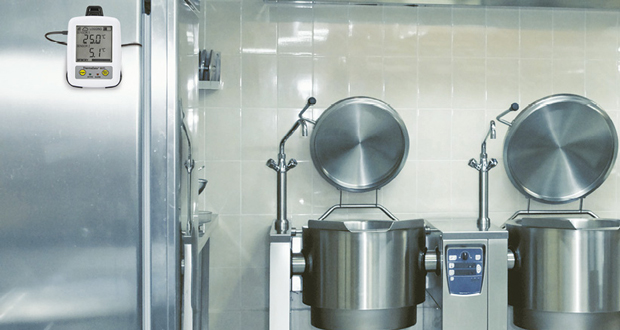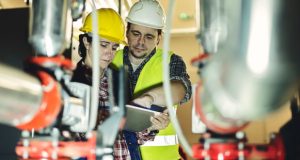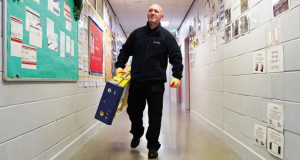Jason Webb, Managing Director, Electronic Temperature Instruments offers some advice on using technology in food hygiene
Food hygiene and safety are critical aspects of any catering facilities operations. According to the Food Standards Agency, an estimated 380,000 cases of norovirus is linked to food in the UK per year. Its revised foodborne norovirus estimate, combined with better analysis of how many illnesses of unknown cause are also likely to be caused by food, suggests around 2.4 million estimated UK cases of foodborne illness occur each year.
While it may seem easy to fall into the trap of believing that a low hygiene rating could never happen, recent cases have shown that even the most esteemed establishments are not immune to hygiene-related issues. The Michelin-starred restaurant of Antony Worrall Thompson recently received a two-star hygiene rating, which is likely to have a significant impact on its reputation. Therefore, it is crucial to take food hygiene and safety seriously and invest in the necessary tools and technologies to ensure compliance with hygiene regulations.
TECH SUPPORT
Although investing in new technology can be daunting from both a cost and quality perspective, it’s possible to keep food hygiene standards high while keeping costs low. This is not better exemplified than in the food industry’s switch to wireless technology. Wireless data loggers are electronic devices that record temperature over a period of time, producing instant and accurate readings without the need for human input. These devices provide peace of mind by making the process of temperature monitoring more accurate and efficient.
Wireless data loggers work by transmitting data via the cloud which is stored locally on digital devices. The data is then passed through a Wi-Fi router or Bluetooth to a computer regardless of where the user is based at that specific time. The data then stays locally on a hard drive so employees can quickly access real, live temperature readings. This ensures staff can complete checks correctly, identify issues and take corrective actions to reduce spoilage.
Fortunately, most cloud servers support email and SMS alerts, a very important capability for swift delivery of accurate information. This means data loggers can immediately pick up any abnormalities or readings that warrant further investigation, giving staff the power to act quickly.
This capability is also extremely useful if catering suddenly become overwhelmed with high demand. Storing more of any produce can affect the temperature and humidity in a food service environment, allowing bacteria to flourish even if you think you have the right temperature set on the dial. By checking wireless data loggers every few hours, you can monitor both the air and core temperature to ensure that critical limits are never breached. Additionally, for fresh food, wireless data loggers provide an accurate record of temperature during the life-cycle of a product, ensuring the very best in quality.
KEEPING PEOPLE SAFE
Wireless data loggers are an excellent way to make sure the food produced and served, remains fresh and is of the highest quality. However, food hygiene is reliant on the people working with the food to practice good hygiene too. Even with the technology installed, food businesses need to be doing more to protect people’s safety by ensuring high standards of general hygiene are met.
Firstly, it’s crucial that catering teams ensure no cross-contact or contamination takes place. Cross-contamination can endanger customers, and it occurs when bacteria or harmful micro-organisms such as E-coli are unintentionally transferred from one food item to another. According to the World Health Organisation, an estimated 600 million people – almost 10 per cent of the global population – fall ill after eating contaminated food. The health and financial risks are extensive.
Commercial kitchens must also remain fully aware of refrigeration temperatures and best practice. When it comes to temperature the recommended temperature range for a fridge is between 0°C to 5°C, and for a freezer, it is below -18°C. Maintaining these temperatures will ensure that food stays fresh for as long as possible and prevents the growth of harmful bacteria. If there is a power outage, for example, kitchens should keep the doors of their fridge and freezer closed to maintain the temperature as much as possible. A fully stocked freezer can typically keep food frozen for up to 48 hours, while a fridge can keep food cool for up to four hours. Where a kitchen places their fridge and freezer can also affect the temperature, so it is important to consider that when designing their facilities.
Food hygiene and safety are critical aspects of any catering facilities operations. With the help of technology, they can ensure compliance with hygiene regulations and build a reputation for maintaining high food hygiene standards. Advanced temperature monitoring systems can help prevent food spoilage and reduce the risk of foodborne illness. Technology can help to maintain the highest of food hygiene standards, gain the trust and loyalty of customers, and protect a reputation. By doing so, they can create a safer and more efficient environment, which ultimately benefits everyone, including the regulatory bodies.





